European Union
European Union
From Wikipedia, the free encyclopedia
"EU" redirects here. For other uses, see EU (disambiguation).
| ||||
| Motto: "United in diversity"[1][2][3] | ||||
| Anthem: "Ode to Joy" (orchestral)[2] | ||||
|
| ||||
| Capital | Brussels (de facto)[4] 50°51′N 4°21′E | |||
| Largest cities | London and Paris | |||
| Official languages | ||||
| Demonym | European[5] | |||
| Type | Politico-economicunion | |||
| Member states | ||||
| Leaders | ||||
| - | President of the European Commission | Jean-Claude Juncker | ||
| - | President of the European Council | Donald Tusk | ||
| Legislature | Council of the EU Parliament | |||
| Formation[6] | ||||
| - | Treaty of Rome | 1 January 1958 | ||
| - | Treaty of Maastricht | 1 November 1993 | ||
| Area | ||||
| - | Total | 4,324,782 km2 (7tha) 1,669,808 sq mi | ||
| - | Water (%) | 3.08 | ||
| Population | ||||
| - | 2015 estimate | 508,191,116[7] (3rda) | ||
| - | Density | 115.8/km2 300.9/sq mi | ||
| GDP (PPP) | 2015 estimate | |||
| - | Total | $19.035 trillion[8](1sta) | ||
| - | Per capita | $37,607[8] (19tha) | ||
| GDP (nominal) | 2015 estimate | |||
| - | Total | $16.449 trillion[8](2nda) | ||
| - | Per capita | $32,498[9] (16tha) | ||
| Gini (2010) | 30.4[10] medium | |||
| HDI (2011) | very high · 13th / 25tha | |||
| Currency | ||||
| Time zone | WET (UTC)[a] CET (UTC+1) EET (UTC+2) | |||
| - | Summer (DST) | WEST (UTC+1) CEST (UTC+2) EEST (UTC+3) | ||
| Internet TLD | .eu[b] | |||
| Website europa | ||||
| a. | If considered as a single entity. | |||
The European Union (EU) is a politico-economic union of 28 member states that are located primarily in Europe.[12][13] It covers an area of 4,324,782 km2, with an estimated population of over 508 million. The EU operates through a system of supranational institutions and intergovernmental-negotiated decisions by the member states.[14][15] The institutions are: the European Parliament, the European Council, the Council of the European Union, the European Commission, the Court of Justice of the European Union, the European Central Bank, and the Court of Auditors. The European Parliament is elected every five years by EU citizens.
The EU has developed a single market through a standardised system of laws that apply in all member states. Within the Schengen Area, passport controls have been abolished.[16] EU policies aim to ensure the free movement of people, goods, services, and capital,[17] enact legislation in justice and home affairs, and maintain common policies on trade,[18] agriculture,[19] fisheries, andregional development.[20] The monetary union was established in 1999 and came into full force in 2002. It is currently composed of 19 member states that use the euro as their legal tender.
The EU traces its origins from the European Coal and Steel Community (ECSC) and the European Economic Community (EEC), formed by the Inner Six countries in 1951 and 1958, respectively. In the intervening years, the community and its successors have grown in size by the accession of new member states and in power by the addition of policy areas to its remit. The Maastricht Treatyestablished the European Union under its current name in 1993 and introduced European citizenship.[21] The latest major amendment to the constitutional basis of the EU, the Treaty of Lisbon, came into force in 2009.
Covering 7.3% of the world population,[22] the EU in 2014 generated a nominal gross domestic product (GDP) of 18.495 trillion US dollars, constituting approximately 24% of global nominal GDP and 17% when measured in terms of purchasing power parity.[23]Additionally, 26 out of 28 EU countries have a very high Human Development Index, according to the UNDP. In 2012, the EU was awarded the Nobel Peace Prize.[24] Through the Common Foreign and Security Policy, the EU has developed a role in external relations and defence. The union maintains permanent diplomatic missions throughout the world and represents itself at the United Nations, the WTO, the G8, and the G-20. Because of its global influence, the European Union has been described as a current or as a potential superpower.[25]
History
Main articles: History of the European Union and History of Europe
Preliminary
After World War II, European integration was seen as an antidote to the extreme nationalism which had devastated the continent.[26] The 1948 Hague Congress was a pivotal moment in European federal history, as it led to the creation of the European Movement Internationaland of the College of Europe, where Europe's future leaders would live and study together.[27] 1952 saw the creation of the European Coal and Steel Community, which was declared to be "a first step in the federation of Europe."[28] The supporters of the Community included Alcide De Gasperi, Jean Monnet, Robert Schuman, and Paul-Henri Spaak.[29]
Treaty of Rome and growth
In 1957, Belgium, France, Italy, Luxembourg, the Netherlands and West Germany signed the Treaty of Rome, which created the European Economic Community (EEC) and established a customs union. They also signed another pact creating the European Atomic Energy Community (Euratom) for co-operation in developing nuclear energy. Both treaties came into force in 1958.[29]
The EEC and Euratom were created separately from ECSC, although they shared the same courts and the Common Assembly. The EEC was headed by Walter Hallstein (Hallstein Commission) and Euratom was headed by Louis Armand (Armand Commission) and then Étienne Hirsch. Euratom was to integrate sectors in nuclear energy while the EEC would develop a customs union among members.[30][31]
Through the 1960s, tensions began to show, with France seeking to limit supranational power. Nevertheless, in 1965 an agreement was reached and on 1 July 1967 the Merger Treaty created a single set of institutions for the three communities, which were collectively referred to as the European Communities.[32][33] Jean Rey presided over the first merged Commission (Rey Commission).[34]
In 1973, the Communities enlarged to include Denmark (including Greenland, which later left the Community in 1985, following a dispute over fishing rights), Ireland, and the United Kingdom.[35] Norway had negotiated to join at the same time, but Norwegian voters rejected membership in a referendum. In 1979, the first direct, democratic elections to the European Parliament were held.[36]
Greece joined in 1981; Portugal and Spain in 1986.[37] In 1985, the Schengen Agreement paved the way for the creation of open borders without passport controls between most member states and some non-member states.[38] In 1986, the European flag began to be used by the Community[39] and the Single European Act was signed.
In 1990, after the fall of the Eastern Bloc, the former East Germany became part of the Community as part of a reunified Germany.[40]With further enlargement planned to include the former communist states, as well as Cyprus and Malta, the Copenhagen criteria for candidate members to join the EU were agreed upon in June 1993.
Maastricht Treaty and after
The European Union was formally established when the Maastricht Treaty—whose main architects were Helmut Kohl and François Mitterrand—came into force on 1 November 1993.[21] The treaty also gave the name European Community to the EEC, even if it was referred as such before the treaty. In 1995, Austria, Finland, and Sweden joined the EU. In 2002, euro banknotes and coins replaced national currencies in 12 of the member states. Since then, the eurozone has increased to encompass 19 countries. In 2004, the EU sawits biggest enlargement to date when Cyprus, the Czech Republic, Estonia, Hungary, Latvia, Lithuania, Malta, Poland, Slovakia andSlovenia joined the Union.[41]
On 1 January 2007, Romania and Bulgaria became EU members. In the same year, Sloveniaadopted the euro,[41] followed in 2008 by Cyprus and Malta, by Slovakia in 2009, by Estonia in 2011, by Latvia in 2014 and by Lithuania in 2015. In June 2009, the European Parliament elections were held, leading to the second Barroso Commission, and by July, Iceland formally applied for EU membership, but has since suspended negotiations.
On 1 December 2009, the Lisbon Treaty entered into force and reformed many aspects of the EU. In particular, it changed the legal structure of the European Union, merging the EU three pillars system into a single legal entity provisioned with a legal personality, created a permanent President of the European Council, the first of which was Herman Van Rompuy, and strengthened the High Representative,Catherine Ashton.[42]
In 2012, the EU received the Nobel Peace Prize for having "contributed to the advancement of peace and reconciliation, democracy, and human rights in Europe."[43][44]
Structural evolution
Main article: Treaties of the European Union
The following timeline illustrates the integration that has led to the formation of the present union, in terms of structural development driven by international treaties:
| Signed In force Document | 1948 1948 Brussels Treaty | 1951 1952 Paris Treaty | 1954 1955 Modified Brussels Treaty | 1957 1958 Rome treaties | 1965 1967 Merger Treaty | 1975 N/A European Council conclusion | 1985 1985 Schengen Treaty | 1986 1987 Single European Act | 1992 1993 Maastricht Treaty | 1997 1999 Amsterdam Treaty | 2001 2003 Nice Treaty | 2007 2009 Lisbon Treaty | |||||||||
| Three pillars of the European Union: | |||||||||||||||||||||
| European Communities: | |||||||||||||||||||||
| European Atomic Energy Community (EURATOM) | |||||||||||||||||||||
| European Coal and Steel Community (ECSC) | Treaty expired in 2002 | European Union(EU) | |||||||||||||||||||
| European Economic Community (EEC) | |||||||||||||||||||||
| Schengen Rules | European Community (EC) | ||||||||||||||||||||
| TREVI | Justice and Home Affairs (JHA) | ||||||||||||||||||||
| Police and Judicial Co-operation in Criminal Matters (PJCC) | |||||||||||||||||||||
| European Political Cooperation (EPC) | Common Foreign and Security Policy (CFSP) | ||||||||||||||||||||
| Unconsolidated bodies | Western European Union (WEU) | ||||||||||||||||||||
| Treaty terminated in 2011 | |||||||||||||||||||||
Geography
Main article: Geography of the European Union
The EU's member states cover an area of 4,423,147 square kilometres (1,707,787 sq mi).[c] The EU's highest peak is Mont Blanc in the Graian Alps, 4,810.45 metres (15,782 ft) above sea level.[48] The lowest point(s) in the EU is Lammefjorden, Denmark and Zuidplaspolder, Netherlands, at 7 m (23 ft) below sea level.[49] The landscape, climate, and economy of the EU are influenced by its coastline, which is 65,993 kilometres (41,006 mi) long.
Including the overseas territories of France which are located outside the continent of Europe, but which are members of the union, the EU experiences most types of climate from Arctic (North-East Europe) to tropical (French Guyana), rendering meteorological averages for the EU as a whole meaningless. The majority of the population lives in areas with a temperate maritime climate (North-Western Europe and Central Europe), aMediterranean climate (Southern Europe), or a warm summer continental or hemiboreal climate (NorthernBalkans and Central Europe).[50]
The EU's population is highly urbanised, with some 75% of inhabitants (and growing, projected to be 90% in seven member states by 2020) living in urban areas. Cities are largely spread out across the EU, although with a large grouping in and around the Benelux. An increasing percentage of this is due to low density urban sprawl which is extending into natural areas. In some cases, this urban growth has been due to the influx of EU funds into a region.[51]
Member states
Main article: Member state of the European Union
The following 28 sovereign states (of which the map only shows territories situated in and around Europe) constitute the union:[52]
| Name | Capital | Accession | Population[7] | Area (km2) |
|---|---|---|---|---|
| Vienna | 1 January 1995 | 8,584,926 | 83,855 | |
| Brussels | Founder | 11,258,434 | 30,528 | |
| Sofia | 1 January 2007 | 7,202,198 | 110,994 | |
| Zagreb | 1 July 2013 | 4,225,316 | 56,594 | |
| Nicosia | 1 May 2004 | 847,008 | 9,251 | |
| Prague | 1 May 2004 | 10,538,275 | 78,866 | |
| Copenhagen | 1 January 1973 | 5,659,715 | 43,075 | |
| Tallinn | 1 May 2004 | 1,313,271 | 45,227 | |
| Helsinki | 1 January 1995 | 5,471,753 | 338,424 | |
| Paris | Founder | 66,352,469 | 640,679 | |
| Berlin | Founder[d] | 81,174,000 | 357,021 | |
| Athens | 1 January 1981 | 10,812,467 | 131,990 | |
| Budapest | 1 May 2004 | 9,849,000 | 93,030 | |
| Dublin | 1 January 1973 | 4,625,885 | 70,273 | |
| Rome | Founder | 60,795,612 | 301,338 | |
| Riga | 1 May 2004 | 1,986,096 | 64,589 | |
| Vilnius | 1 May 2004 | 2,921,262 | 65,200 | |
| Luxembourg | Founder | 562,958 | 2,586 | |
| Valletta | 1 May 2004 | 429,344 | 316 | |
| Amsterdam | Founder | 16,900,726 | 41,543 | |
| Warsaw | 1 May 2004 | 38,005,614 | 312,685 | |
| Lisbon | 1 January 1986 | 10,374,822 | 92,390 | |
| Bucharest | 1 January 2007 | 19,861,408 | 238,391 | |
| Bratislava | 1 May 2004 | 5,421,349 | 49,035 | |
| Ljubljana | 1 May 2004 | 2,062,874 | 20,273 | |
| Madrid | 1 January 1986 | 46,439,864 | 504,030 | |
| Stockholm | 1 January 1995 | 9,747,355 | 449,964 | |
| London | 1 January 1973 | 64,767,115 | 243,610 |
Through successive enlargements, the Union has grown from the six founding states—Belgium, France, West Germany, Italy, Luxembourg, and the Netherlands—to the current 28. Countries accede to the union by becoming party to the foundingtreaties, thereby subjecting themselves to the privileges and obligations of EU membership. This entails a partial delegation of sovereignty to the institutions in return for representation within those institutions, a practice often referred to as "pooling of sovereignty".[53][54]
To become a member, a country must meet the Copenhagen criteria, defined at the 1993 meeting of the European Council in Copenhagen. These require a stable democracy that respects human rights and the rule of law; a functioning market economy; and the acceptance of the obligations of membership, including EU law. Evaluation of a country's fulfilment of the criteria is the responsibility of the European Council.[55] No member state has ever left the Union, although Greenland (anautonomous province of Denmark) withdrew in 1985.[56] The Lisbon Treaty now contains a clause providing for a member to leave the EU.[57]
There are six countries which are recognized as candidates for membership: Albania, Iceland, Macedonia,[e] Montenegro,Serbia, and Turkey.[58] However, on 13 June 2013, Iceland's Foreign Minister, Gunnar Bragi Sveinsson, informed the European Commission that the newly elected government intended to "put negotiations on hold".[59] Bosnia and Herzegovinaand Kosovo are officially recognised as potential candidates,[58] but have not submitted membership applications. Due to the lack of recognition by five of the 28 EU member states, the European Commission refers only to "Kosovo*", with an asterisked footnote containing the text agreed to by the Belgrade–Pristina negotiations: "This designation is without prejudice topositions on status, and is in line with UNSCR 1244 and the ICJ Opinion on the Kosovo Declaration of Independence."
Four countries forming the European Free Trade Association (EFTA) (that are not EU members) have partly committed to the EU's economy and regulations: Iceland, Liechtenstein and Norway, which are a part of the single market through theEuropean Economic Area, and Switzerland, which has similar ties through bilateral treaties.[60][61] The relationships of theEuropean microstates, Andorra, Monaco, San Marino, and the Vatican include the use of the euro and other areas of co-operation.[62]
Environment
Further information: European Commissioner for the Environment and European Climate Change Programme
In 1957, when the EU was founded, it had no environmental policy, bureaucracy or laws.[63] Over the past 50 years, an increasingly dense network of legislation has been created, extending to all areas of environmental protection, including air pollution, water quality, waste management, nature conservation, and the control of chemicals, industrial hazards and biotechnology.[64] According to the Institute for European Environmental Policy, environmental law comprises over 500 Directives, Regulations and Decisions, making environmental policy a core area of European politics.[65]
Such developments may be surprising given the legal and institutional conditions of the late 1950s and 60s.[66] Acting without any legislative authority, European policy-makers originally increased the EU's capacity to act on environmental issues by defining it as a trade problem: trade barriers and competitive distortions in the Common Market could emerge due to the different environmental standards in each member state.[67] In subsequent years, the environment became a formal policy area, with its own policy actors, principles and procedures. The legal basis for EU environmental policy was established more explicitly with the introduction of the Single European Act in 1987.[65]
Initially, EU environmental policy focused on Europe. More recently, the EU has demonstrated leadership in global environmental governance, e.g. the role of the EU in securing the ratification and coming into force of the Kyoto Protocol despite opposition from the United States. This international dimension is reflected in the EU's Sixth Environmental Action Programme,[68] which recognises that its objectives can only be achieved if key international agreements are actively supported and properly implemented both at EU level and worldwide. The Lisbon Treaty further strengthened the EU's global environmental leadership ambitions.[69] EU law has played a significant role in improving habitat and species protection in Europe, as well as contributing to improvements in air and water quality and waste management.[65]
Mitigating climate change is one of the top priorities of EU environmental policy. In 2007, member states agreed that, in future, 20% of the energy used across the EU must be renewable, and carbon dioxide emissions have to be lower in 2020 by at least 20% compared to 1990 levels.[70] Also in 2020, 10% of the fuel used by cars and trucks in EU 27 will have to be from renewable sources, such as biofuels.
The EU has adopted an emissions trading system to incorporate carbon emissions into the economy.[71]
The European Green Capital is an annual award given to cities that focuses on the environment, energy efficiency and quality of life in urban areas to create smart city.
Politics
Main article: Politics of the European Union
The EU operates within those competencies conferred on it by the treaties and according to the principle ofsubsidiarity (which dictates that action by the EU should only be taken where an objective cannot be sufficiently achieved by the member states alone). Laws made by the EU institutions are passed in a variety of forms. Generally speaking, they can be classified into two groups: those which come into force without the necessity for national implementation measures and those which specifically require national implementation measures.[72]
Constitutional nature
Further information: Treaties of the European Union
The classification of the European Union in terms of international or constitutional law has been much debated, often in the light of the degree of integration that is perceived, desired, or expected. Historically, at least, the EU is an international organisation, and by some criteria, it could be classified as a confederation; but it also has many attributes of a federation, so some would classify it as a (de facto) federation of states.[73][74][75] For this reason, the organisation has, in the past, been termed sui generis (incomparable, one of a kind), though it is also argued that this designation is no longer true.[76][77]
The organisation itself has traditionally used the terms "community", and later "union". The difficulties of classification involve the difference between national law (where the subjects of the law include natural persons and corporations) and international law (where the subjects include sovereign states and international organisations); they can also be seen in the light of differing European and American constitutional traditions.[76] Especially in terms of the European constitutional tradition, the term federation is equated with a sovereign federal state in international law; so the EU cannot be called a federal state or federation—at least, not without qualification. Though not, strictly, a federation, it is more than a free-trade association.[78] It is, however, described as being based on a federal model or federal in nature. Walter Hallstein, in the original German edition of Europe in the Making called it "an unfinished federal state".[79] The German Constitutional Court refers to the European Union as an association of sovereign states and affirms that making the EU a federation would require replacement of the German constitution.[80] Others claim that it will not develop into a federal state but has reached maturity as an international organisation.[81]



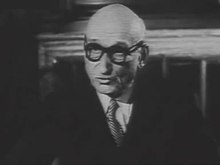
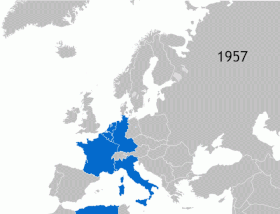


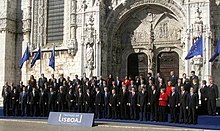
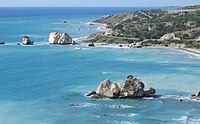



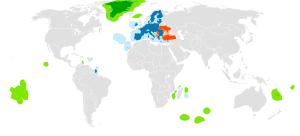
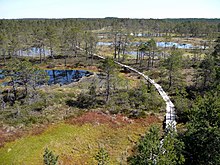


تعليقات
إرسال تعليق